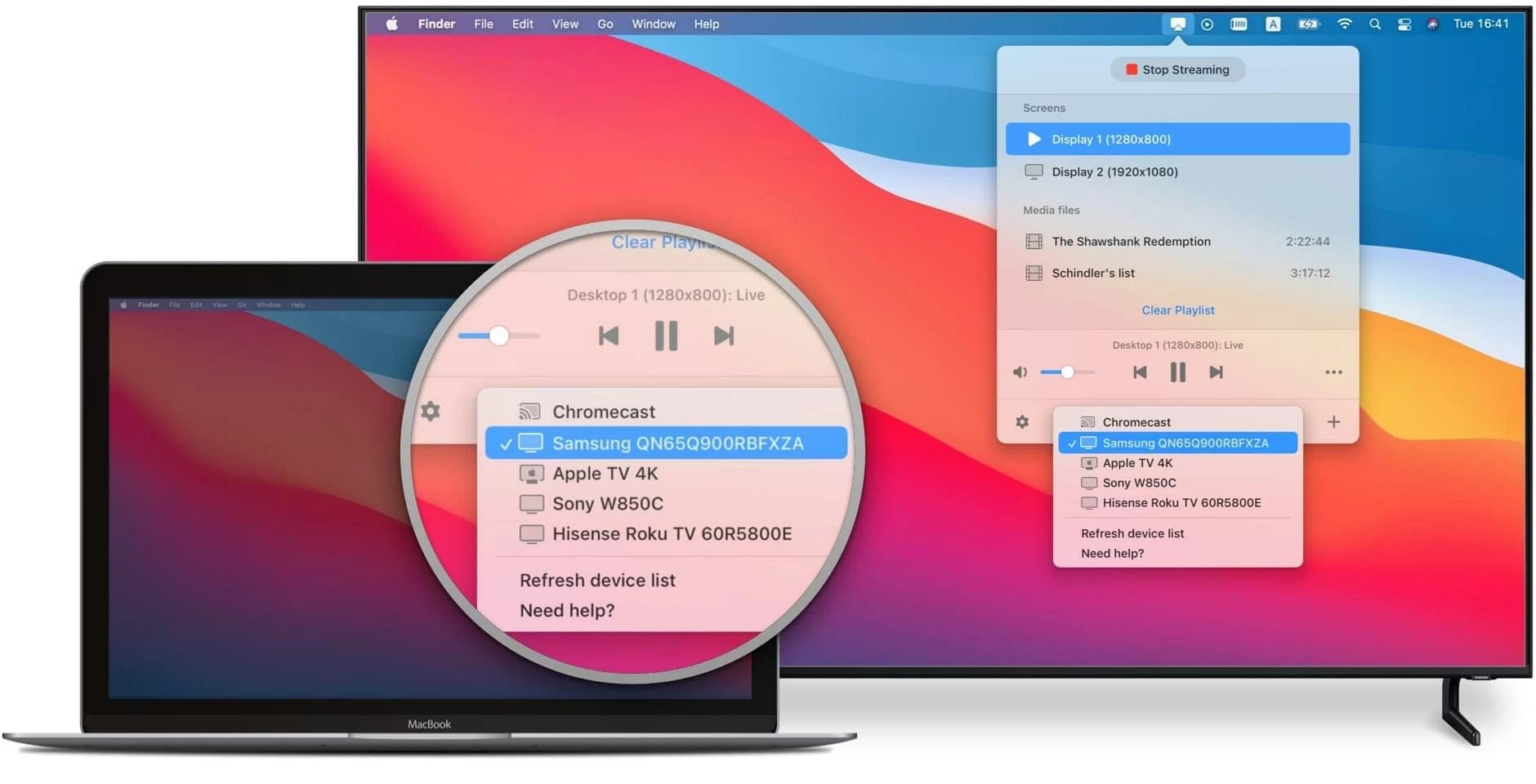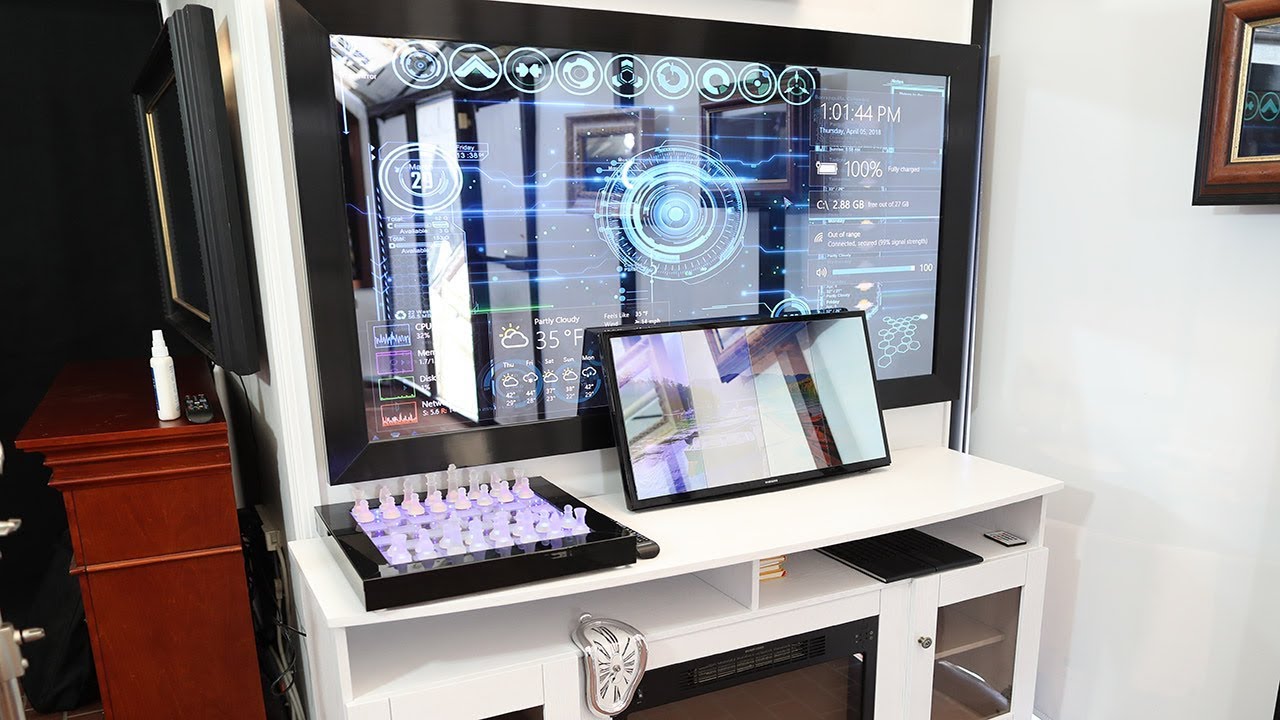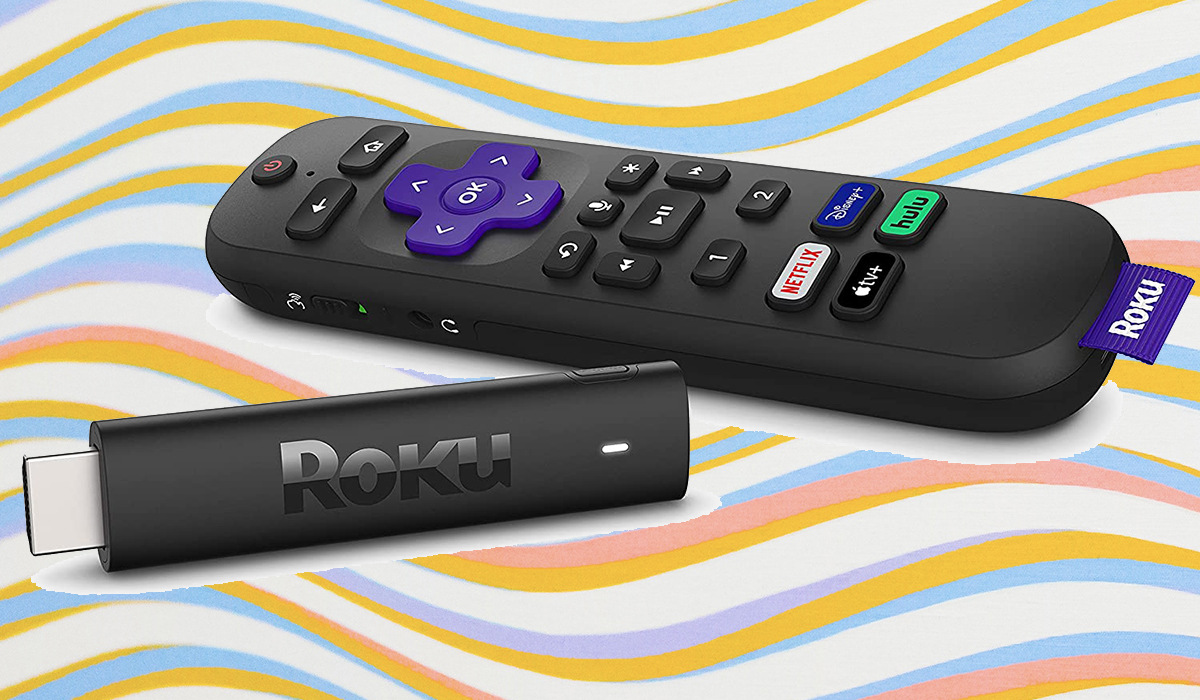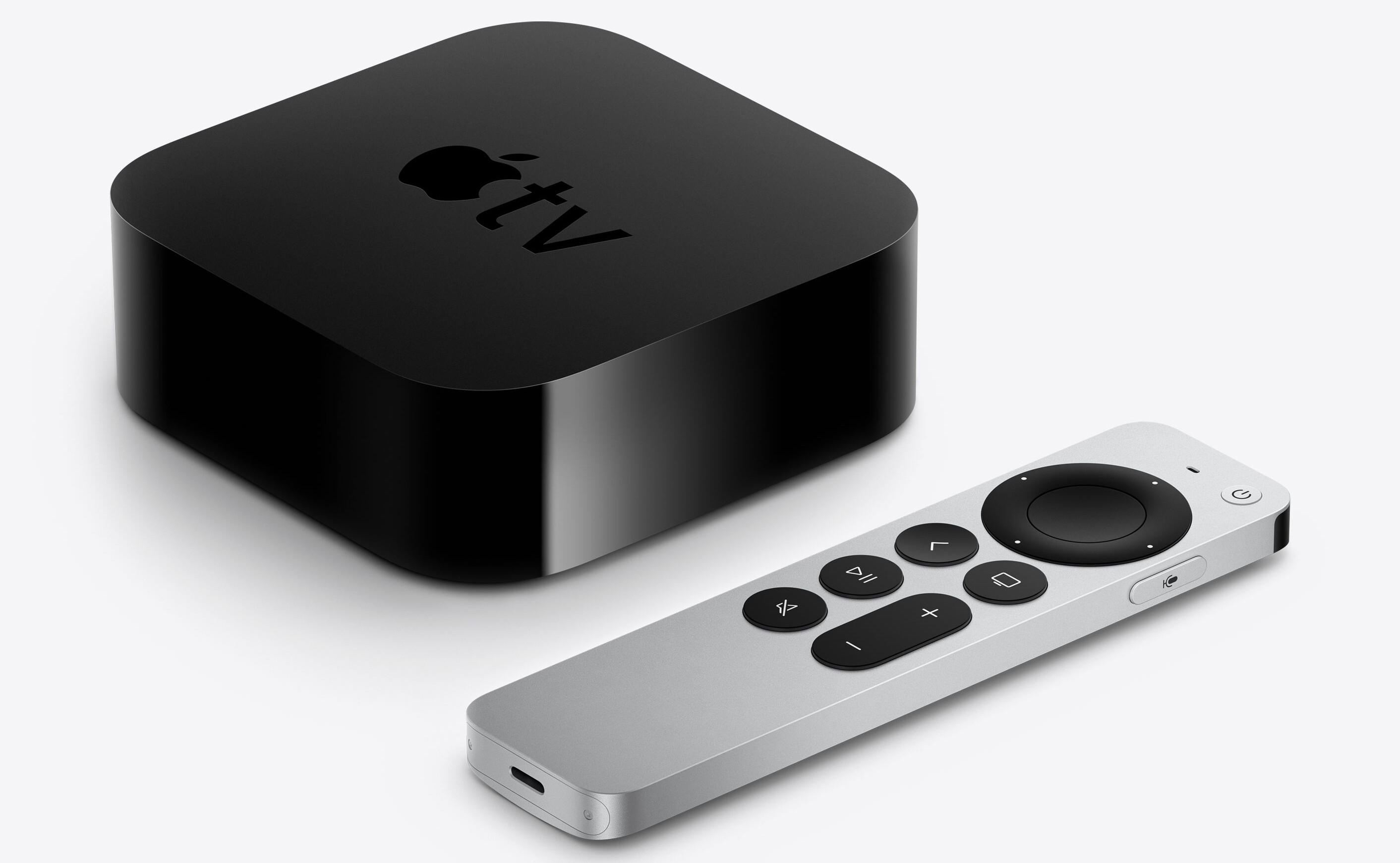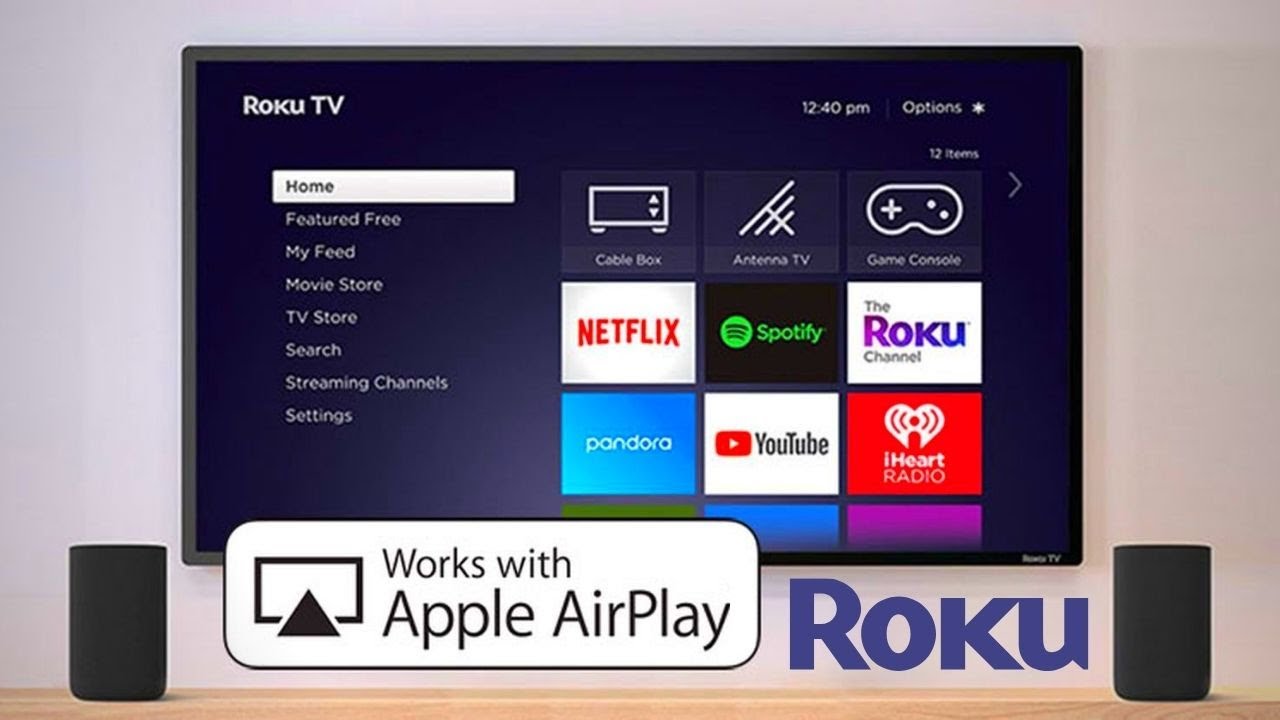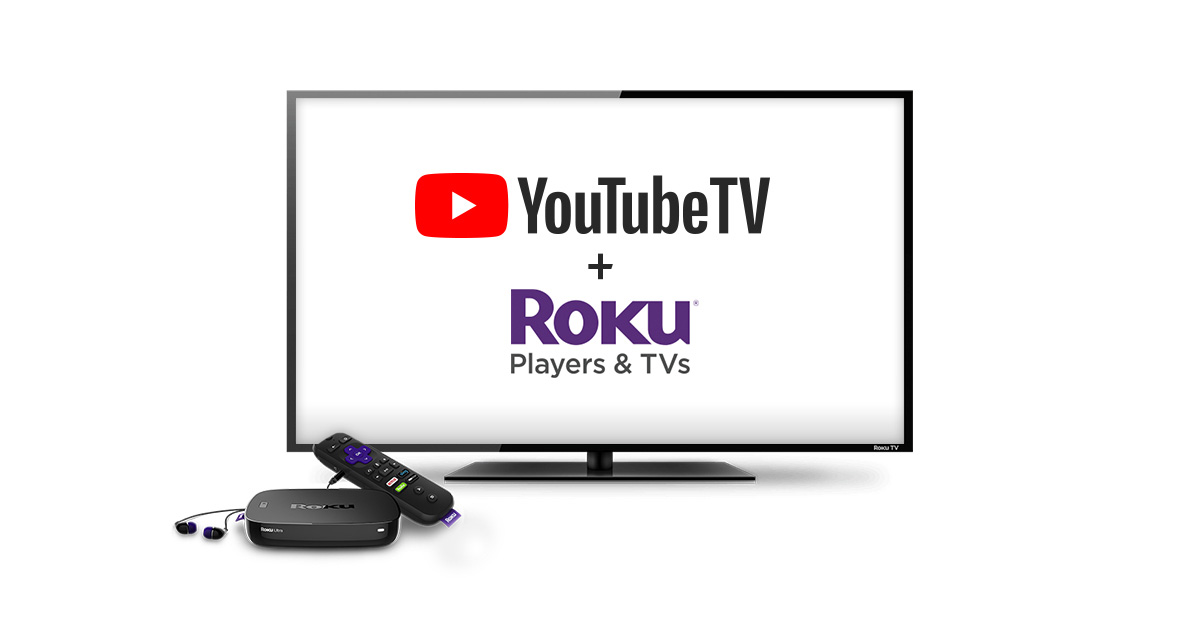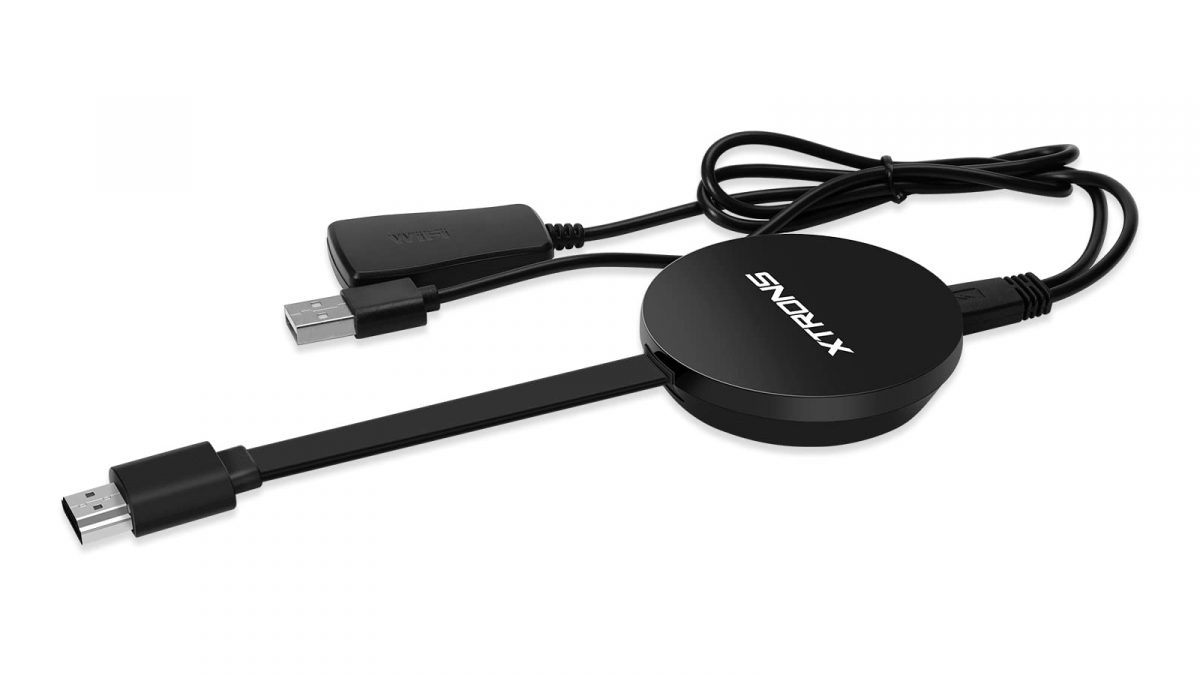Introduction
Screen mirroring has revolutionized the way we consume media and share content. It allows you to effortlessly display the screen of your Macbook on a bigger screen, such as a television or projector. One popular device that enables screen mirroring is the Roku streaming player. With its easy-to-use interface and extensive compatibility, Roku provides an excellent option for Macbook owners to enjoy their multimedia content on a larger display.
Screen mirroring, also known as screen casting or screen sharing, enables you to mirror your Macbook’s display on another device wirelessly. This means that whatever is shown on your Macbook’s screen, whether it be videos, photos, presentations, or even web browsing, can be projected onto a Roku-enabled TV or other compatible device.
Why would you want to screen mirror your Macbook to Roku? The reasons are numerous. First and foremost, screen mirroring allows for a more immersive and enjoyable media viewing experience. Instead of huddling around a small laptop screen, you can now enjoy your favorite movies, TV shows, or videos on a larger display, resulting in a more cinematic experience. Additionally, screen mirroring opens up the possibility of sharing your Macbook’s screen with others during presentations, meetings, or gatherings.
In order to successfully screen mirror your Macbook to Roku, there are a few pre-requisites you need to be aware of. Firstly, you’ll need a Macbook with built-in screen mirroring capabilities or compatible screen mirroring software. Roku also needs to be connected to the same Wi-Fi network as your Macbook. Lastly, it’s crucial to ensure that both your Macbook and Roku software are updated to the latest versions to avoid any compatibility issues.
In this comprehensive guide, we will walk you through the step-by-step process of screen mirroring your Macbook to Roku. We will also address common troubleshooting issues that may arise along the way. So, grab your Macbook, fire up your Roku, and get ready to experience the convenience and versatility of screen mirroring!
What is Screen Mirroring?
Screen mirroring is a technology that allows you to mirror the display of one device onto another device, usually wirelessly. It essentially duplicates your device’s screen onto a larger display, such as a TV or projector. In the case of screen mirroring your Macbook to Roku, it allows you to see your Macbook’s screen on your Roku-enabled TV.
By establishing a connection between your Macbook and Roku, screen mirroring enables you to enjoy your Macbook’s content on a larger screen in real-time. Whether it’s watching movies, playing games, giving presentations, or even browsing the web, screen mirroring offers a convenient way to share your Macbook’s display with others.
Screen mirroring can be a valuable tool in various scenarios. Here are a few common use cases:
- Entertainment: Screen mirroring allows you to transform your TV into a multimedia hub. You can stream videos, photos, and music from your Macbook directly onto the big screen, creating a more enjoyable and immersive viewing experience.
- Presentations: Screen mirroring is a valuable tool for professionals who need to present their work or deliver presentations. Instead of relying on a small laptop screen, screen mirroring allows you to showcase your content on a larger display, ensuring that everyone in the room can see clearly.
- Collaboration: Screen mirroring facilitates collaboration and teamwork. Whether you’re working on a project with colleagues or studying with friends, screen mirroring allows everyone to view and work on the same content simultaneously, fostering a more efficient and engaging work environment.
- Gaming: For gaming enthusiasts, screen mirroring opens up a whole new world of possibilities. By mirroring your Macbook’s screen to a larger TV, you can enjoy your favorite games with enhanced visuals and a more immersive gaming experience.
Overall, screen mirroring is a versatile and convenient technology that allows you to extend your device’s screen onto a larger display. Whether it’s for entertainment, presentations, collaboration, or gaming, screen mirroring provides a seamless and interactive way to enjoy your Macbook’s content on a bigger screen.
Why should you screen mirror Macbook to Roku?
Screen mirroring your Macbook to Roku offers a range of benefits and advantages that make it an appealing option for Macbook users. Here are a few reasons why you should consider screen mirroring your Macbook to Roku:
- Enhanced Viewing Experience: One of the primary reasons to screen mirror your Macbook to Roku is the improved viewing experience. With a larger screen and better audio quality, you can enjoy your favorite movies, TV shows, and videos in a more immersive and cinematic way. Whether you’re streaming content online, playing a video file, or even browsing through your photo collection, screen mirroring allows you to see it all on a bigger and more visually captivating display.
- Convenient Sharing: Screen mirroring is an excellent tool for sharing content with others. Whether you’re presenting a slideshow, collaborating on a project, or simply sharing photos and videos with friends and family, screen mirroring to Roku makes it easy to display your Macbook’s content on a larger screen for everyone to see. It eliminates the need for everyone to huddle around a small laptop screen and ensures that everyone in the room can comfortably view the content.
- Wireless Connectivity: Screen mirroring with Roku provides the convenience of wireless connectivity. It eliminates the need for messy cables and allows for easy and seamless mirroring of your Macbook’s screen to your Roku-enabled TV. This wireless connection ensures greater flexibility and mobility, allowing you to move around freely while still enjoying the content on a larger screen.
- Versatility and Compatibility: Roku is known for its extensive compatibility and support for various streaming platforms and devices. When you screen mirror your Macbook to Roku, you gain access to a wide range of streaming apps, including popular ones like Netflix, Hulu, and YouTube. This versatility ensures that you can enjoy your favorite content from different sources, all conveniently accessible through the Roku interface.
- Simplicity of Use: Screen mirroring your Macbook to Roku is a user-friendly process. Roku’s intuitive interface makes it easy to navigate and mirror your Macbook’s screen without any technical expertise. With just a few simple steps, you can quickly connect and start enjoying your Macbook’s content on the big screen.
Overall, screen mirroring your Macbook to Roku offers an enhanced viewing experience, convenient content sharing, wireless connectivity, versatility, and simplicity of use. Whether you’re looking to enjoy movies, share presentations, or collaborate on projects, screen mirroring with Roku is a fantastic option that brings your Macbook’s content to life on a larger screen.
Pre-requisites for screen mirroring
In order to successfully screen mirror your Macbook to Roku, there are a few pre-requisites that you should take into consideration. Ensuring that you have the necessary components and settings in place will help facilitate a smooth and seamless screen mirroring experience. Here are the pre-requisites for screen mirroring your Macbook to Roku:
- Macbook with screen mirroring capabilities: First and foremost, you will need a Macbook that has built-in screen mirroring capabilities. Most newer Macbook models come with this feature, allowing you to mirror your screen without additional software or hardware. However, if your Macbook doesn’t support screen mirroring, you may need to consider using third-party screen mirroring software or hardware solutions.
- Roku device: To mirror your Macbook’s screen to a larger display, such as a TV, you will need a Roku device. Roku offers a range of streaming players that support screen mirroring. Make sure you have a Roku device, such as a Roku streaming stick or Roku Express, that is connected to your TV and functioning properly.
- Same Wi-Fi network: Both your Macbook and Roku device need to be connected to the same Wi-Fi network. This is essential for establishing a connection between your Macbook and Roku. Ensure that both devices are connected to a stable Wi-Fi network with a strong signal strength to avoid any connectivity issues during the screen mirroring process.
- Updated software: To avoid any compatibility issues, it is crucial to have the latest software versions installed on both your Macbook and Roku device. Check for any available software updates on your Macbook by going to the App Store and on your Roku device by navigating to the Settings menu. Keeping the software up-to-date ensures that you have access to the latest features and improvements when screen mirroring.
- Screen resolution compatibility: It’s worth noting that not all Macbook resolutions are fully compatible with all Roku devices. Some Roku models have specific screen resolution requirements for optimal screen mirroring performance. Ensure that your Macbook’s screen resolution is compatible with your Roku device to avoid any issues with screen sizing or aspect ratio during the mirroring process.
By meeting these pre-requisites, you can ensure that the necessary components and settings are in place to successfully screen mirror your Macbook to Roku. Having a compatible Macbook, a functioning Roku device, a shared Wi-Fi network, updated software, and proper screen resolution compatibility will pave the way for a seamless and enjoyable screen mirroring experience.
Step-by-step guide to screen mirror Macbook to Roku
Screen mirroring your Macbook to Roku is a straightforward process that can be done in just a few steps. Follow this step-by-step guide to mirror your Macbook’s screen onto your Roku-enabled TV:
- Connect your Roku device to your TV: Start by connecting your Roku device to your TV using an HDMI cable. Ensure that both the Roku device and TV are powered on.
- Connect your Macbook to the same Wi-Fi network as your Roku device: Make sure that your Macbook is connected to the same Wi-Fi network as your Roku device. This is crucial for establishing a connection between the two devices.
- Access the Roku home screen: On your TV, navigate to the Roku home screen by using the Roku remote. Press the Home button to access the main menu.
- Enable screen mirroring on your Roku device: On the Roku home screen, go to the Settings menu. From there, select System and then Screen Mirroring. Choose either “Prompt” or “Always Allow” to enable screen mirroring on your Roku device.
- Open the AirPlay menu on your Macbook: On your Macbook, click on the AirPlay icon located in the menu bar at the top right corner of the screen. Alternatively, you can go to System Preferences, click on Displays, and then select the “Show mirroring options in the menu bar when available” checkbox.
- Select your Roku device: In the AirPlay menu on your Macbook, you should see a list of available devices for screen mirroring. Select your Roku device from the list.
- Enter the screen mirroring code: Your Macbook will display a screen mirroring code. Take note of this code.
- Enter the screen mirroring code on your TV: On your TV, you will see a prompt asking you to enter the screen mirroring code. Using your Roku remote, enter the code displayed on your Macbook.
- Start screen mirroring: Once the code is entered correctly, your Macbook’s screen will start mirroring on your Roku-enabled TV. You can now see and control your Macbook’s display on the larger screen.
That’s it! You have successfully screen mirrored your Macbook to Roku. Enjoy watching your favorite content, giving presentations, or collaborating with others on the big screen.
Note: The steps mentioned above may vary slightly depending on the specific model and software version of your Macbook and Roku device. Make sure to refer to the respective user manuals or online guides for any specific instructions related to your devices.
Troubleshooting common issues
While screen mirroring your Macbook to Roku is generally a seamless process, there may be instances where you encounter some common issues. Here are a few troubleshooting tips to help you troubleshoot and resolve these issues:
- Poor connection or dropped signal: If you experience a poor connection or a dropped signal during screen mirroring, ensure that both your Macbook and Roku device are within a reasonable range of your Wi-Fi router. Additionally, check for any wireless interference from other devices or appliances and consider adjusting the positioning of your devices for a stronger signal.
- Compatibility issues: If you’re encountering compatibility issues, double-check that both your Macbook and Roku device are running the latest software versions. Updates often include bug fixes and performance enhancements that can help resolve compatibility issues.
- Screen sizing or aspect ratio problems: If the mirrored screen’s size or aspect ratio appears incorrect, ensure that your Macbook’s screen resolution is compatible with your Roku device. Adjusting the screen resolution on your Macbook or the display settings on your Roku device may help resolve this issue.
- Network issues: If your Macbook and Roku device aren’t connecting to the same Wi-Fi network, double-check your network settings and make sure both devices are connected to the correct network. Restarting your router or reconnecting to the Wi-Fi network may also help resolve network-related issues.
- Streaming or buffering issues: If you encounter streaming or buffering issues during screen mirroring, ensure that your internet connection is stable and fast enough to handle the streaming content. Reduce network congestion by disconnecting any unused devices from the network and pause any bandwidth-intensive activities on other devices.
If you’ve tried the above troubleshooting tips and are still experiencing issues with screen mirroring your Macbook to Roku, it might be helpful to refer to the user manuals or online support resources for both your Macbook and Roku device. You can also reach out to the respective customer support teams for further assistance.
Remember, troubleshooting and resolving common issues may require a bit of patience and trial-and-error. By following these troubleshooting tips and seeking the necessary support, you should be able to overcome any obstacles and enjoy a smooth and seamless screen mirroring experience.
Alternatives to screen mirroring Macbook to Roku
While screen mirroring your Macbook to Roku is a convenient way to enjoy your Macbook’s content on a larger screen, there are alternative methods available that you may consider depending on your specific needs and preferences. Here are a few alternatives to screen mirroring Macbook to Roku:
- HDMI connection: If you have an HDMI cable, you can directly connect your Macbook to your TV using the HDMI port. This method provides a reliable and high-quality connection, allowing you to mirror your Macbook’s screen without relying on wireless technology. Simply connect one end of the HDMI cable to your Macbook’s HDMI port and the other end to the HDMI port on your TV.
- Apple TV: If you’re invested in the Apple ecosystem, using an Apple TV as a media streaming device can provide seamless integration between your Macbook and TV. With Apple TV, you can use AirPlay to wirelessly stream content from your Macbook to your TV. It offers additional features and functionalities, such as access to the App Store and compatibility with Apple’s HomeKit ecosystem.
- Chromecast: Google’s Chromecast is another popular device that allows you to stream content from your Macbook to your TV. It works by plugging the Chromecast device into the HDMI port of your TV and using the Google Home app on your Macbook to cast content wirelessly. Chromecast offers compatibility with various streaming apps and provides a user-friendly interface for controlling your media playback.
- Smart TV screen mirroring: Many modern smart TVs come with built-in screen mirroring capabilities, allowing you to mirror your Macbook’s screen directly to the TV without the need for additional devices. Check your TV’s user manual or settings menu to see if it supports screen mirroring or wireless display and follow the instructions to connect and mirror your Macbook’s screen.
- Third-party screen mirroring software: There are third-party screen mirroring software available, such as Reflector, AirParrot, and Mirroring360, that offer advanced features and compatibility with various devices. These software solutions allow you to mirror your Macbook’s screen to your TV or other devices without relying on specific streaming devices or built-in capabilities.
Each alternative has its own advantages and considerations, so it’s important to choose the one that best suits your requirements. Depending on the connectivity options available to you and the level of integration you desire, you can explore these alternatives to screen mirroring your Macbook to Roku.
Remember to check the compatibility, setup instructions, and user reviews for each alternative method before making a decision. Additionally, ensure that your Macbook and TV meet the necessary requirements for the chosen alternative to ensure a smooth and successful screen mirroring experience.
Conclusion
Screen mirroring your Macbook to Roku opens up a world of possibilities for enjoying your favorite content on a larger screen. Whether you’re streaming movies, giving presentations, collaborating with others, or simply sharing photos and videos, screen mirroring provides a convenient way to extend your Macbook’s display to a Roku-enabled TV.
We began by understanding the concept of screen mirroring and its benefits. Screen mirroring allows you to duplicate your Macbook’s screen on a bigger display, creating a more immersive viewing experience and enabling convenient sharing of content with others.
We explored the pre-requisites for successful screen mirroring, including having a compatible Macbook with screen mirroring capabilities, a functioning Roku device, a shared Wi-Fi network, updated software, and proper screen resolution compatibility.
Following that, we provided a step-by-step guide to help you screen mirror your Macbook to Roku. By connecting both devices to the same Wi-Fi network, enabling screen mirroring on your Roku device, and selecting your Roku device from the AirPlay menu on your Macbook, you can easily mirror your Macbook’s screen on a larger display.
If you encounter any issues during the screen mirroring process, we provided troubleshooting tips to help you resolve common problems such as poor connection, compatibility issues, screen sizing, network issues, and streaming or buffering problems.
Lastly, we explored alternative methods to screen mirroring your Macbook to Roku, including using an HDMI connection, Apple TV, Chromecast, smart TV screen mirroring, or third-party screen mirroring software. These alternatives offer different features and considerations, allowing you to choose the method that best suits your needs.
In conclusion, screen mirroring your Macbook to Roku provides a convenient way to enjoy your Macbook’s content on a larger screen, enhancing your viewing experience and enabling seamless content sharing. Whether for entertainment, presentations, collaboration, or gaming, screen mirroring with Roku offers versatility and flexibility for a wide range of applications. With the right setup and troubleshooting knowledge, you can easily connect your Macbook to Roku and enjoy all that screen mirroring has to offer.







